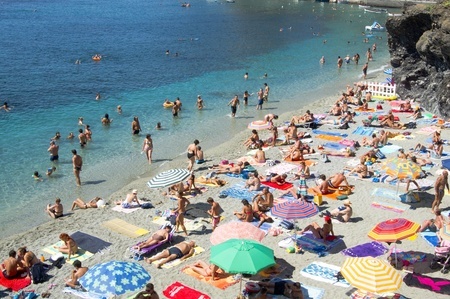Parents if you have a child with autism than it is time for some swim lessons! As we head into the Summer, the number one season for pool time, a surprising new study has revealed that drowning remains a leading cause of death in children with autism.
Summer time for many families is often jam packed with cool down sessions at the beach, local pool or waterpark. The problem is that many times these places are crowded, which can cause some children with autism to be overstimulated and escape to unsafe environments like a deeper area of the pool or a remote spot in the ocean where they can’t get help if they get into trouble.
“Among the plethora of concerns for families dealing with autism, includes addressing water safety practices as early as possible in a child’s life,” Varleisha Gibbs, OTD, OTR/L, occupational therapy professor at University of the Sciences in Philadelphia told Science Daily. “Although water safety is a concern for all parents, children with autism are especially at a higher risk for drowning because they may seek isolation by fleeing to unfamiliar territories.”
And the stats are shocking. The National Autism Association says that accidental drowning accounted for approximately 90 percent of total U.S. deaths reported in children with autism ages 14 and younger subsequent to wandering/elopement in 2009 to 2011. Furthermore, research indicates that nearly 50 percent of children with autism attempt to escape from a safe environment — a rate nearly four times higher than children without autism.
Dr. Gibbs compiled the following summer safety tips to help parents relax and enjoy the summer with their children with autism:
- Learn to swim. Enroll your child in swimming and water safety lessons as early as possible.
- Visual learning. Use video narratives to discuss water safety, as well as outline specific rules and consequences related to poor safety practices.
- Display reminders. For children who respond well to visual cues, consider placing STOP or DO NOT ENTER signs on all doors that open to the outside.
- Key information. Make sure your child knows his or her name, address, and phone number in the event he or she is separated from family. If your child does not speak, he or she should wear a bracelet or necklace with identifiable information.
- Avoid sensory-overload. Summer is the time for vacations, exploring new places, and sensory-overloading experiences. Try to prepare your child for what they can expect as they enter a new environment — whether it is a beach, pool, or even a restaurant.
- Alert others. Communicate with your neighbors, whether at home or on vacation, and ask them to contact you immediately if they see your child wandering alone outside your home or property
“Swimming and aquatic therapy is actually a wonderful sport for children with autism because it can address many of their body’s sensory and motor needs,” said Dr. Gibbs. “By preparing and communicating with your child with autism, family, and friends, summer trips and activities can be much less stressful and more enjoyable.”
It is also safe to say that if you are concerned your child may be scared by an overcrowded beach or pool, they should wear a floatation device during that outing. In the past wandering was a concern for us so our guy was always equipped with a lifejacket even if we were just at my parents house. Sometimes children with special needs are also less able to respond to a fast situation and could end up falling in the pool as well. This has happened to us in the past as well, but thankfully we have done the swimming lessons and he also wears the jacket just for extra safety in unfamiliar situations.
SOURCE







